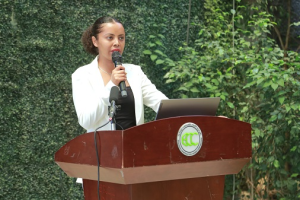
Over the past decades, Ethiopia has been executing various activities to eliminate Guinea worm disease (GWD) and lessen the social, economic and health burden of the infection. Consequently, as documents stated, the country has made significant progress in reducing the number of cases by more than 98.66 percent from 1994 to 2017 though it could not eliminate the disease entirely.
According to Kassahun Demissie, Guinea Worm Eradication National Program Coordinator with the Ethiopian Public Health Institute (EPHI), concerted efforts are underway to eradicate Guinea worm from endemic areas where the cases are exhibited and humans and animals are affected by the disease. The efforts are more organized and offices are staffed with competent, skilled human power in Gambella State at all levels.
Ethiopian Public Health Institute has been working in collaboration with The Carter Center Ethiopia and World Health Organizations (WHO) to strengthen the eradication effort. To realize the objective, the Institute has established a case team at the Federal level and recruited staff working on the case. There is also a continuous supportive supervision in GW endemic woredas.
The Ministry of Health and EPHI have been conducted advocacy field visits at commercial farms to initiate farm owners for the provision of safe potable water supply, he added.
Coordinated effort is also employed by the Ministry and EPHI to solve the issue of safe water. As to him, the lack of safe water in farm areas had once led to an outbreak of the infection in one of the farms and affected laborers.
The good news is that during the last two years, Ethiopia has reported no human Guinea worm disease though cases of animal GWD were detected.
While talking about the time when the country becomes free from GW and receive the certificate, the Coordinator said that currently, it is difficult to utter the exact timetable as it requires the fulfillment of three prerequisites in advance. The first one is the full confirmation of the absence of both human and animal infection cases for three consecutive years.
The second one is evidence of a functional national surveillance system to detect any imported case, including, the capacity of the health system to adequately deal with any rumor of GWD, in order to prevent re-introduction. Likewise, the acceptable awareness level of the public on the disease and evidence on the cash reward system that population is motivated to report GWD rumors, as well as knowing the case definition of Guinea worm and prevention mechanisms expected from health professionals.
The program eliminated the endemic transmission of GW in South Omo in 2001 and since then, the area has remained free of transmission of the disease.
Reiterating that Ethiopian Dracunculiasis Eradication Program (EDEP) has reported no case of human GWD since December 2017 except for infected animals but with reducing the number, he said every effort will be made to interrupt the transmission, eradicate the case fully and certify the country.
EDEP began to eradicate Guinea worm disease in 1993.
The Ethiopian Herald February 12/2020
BY MENGISTEAB TESHOME





